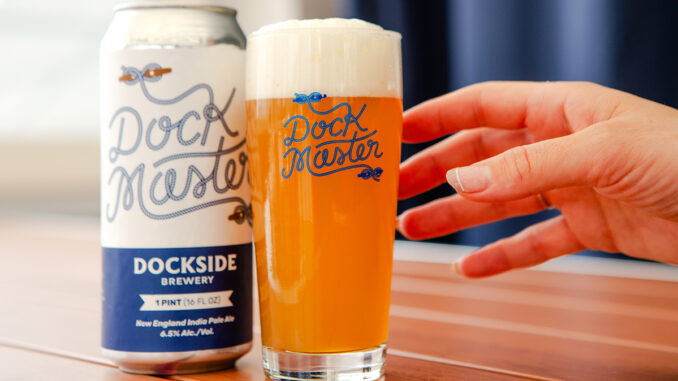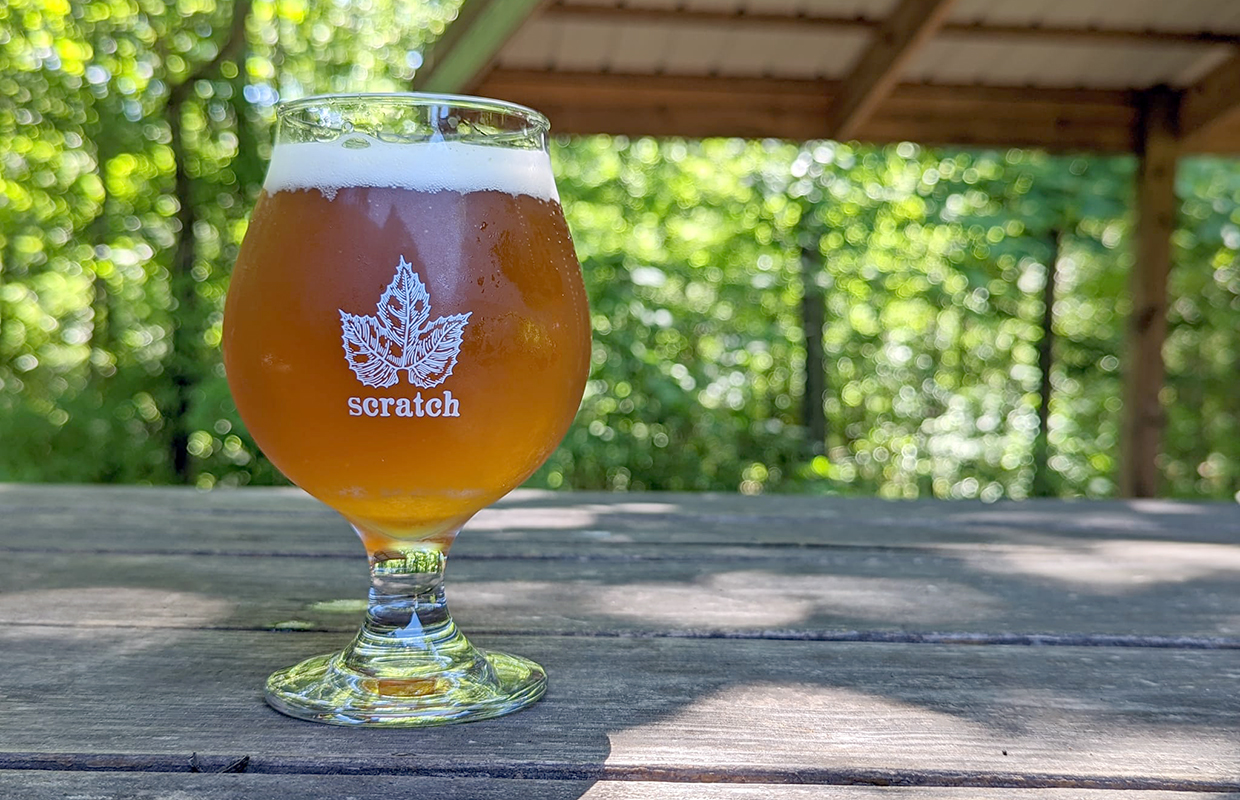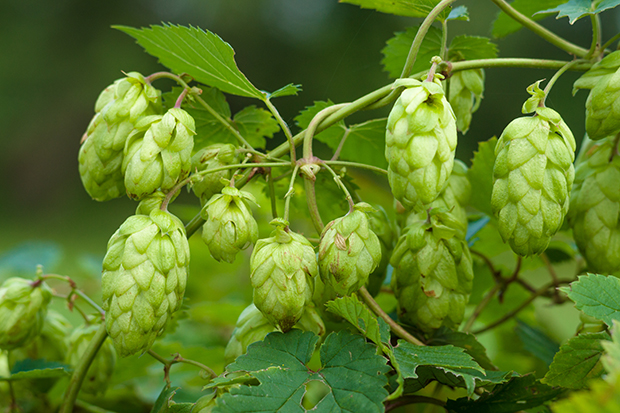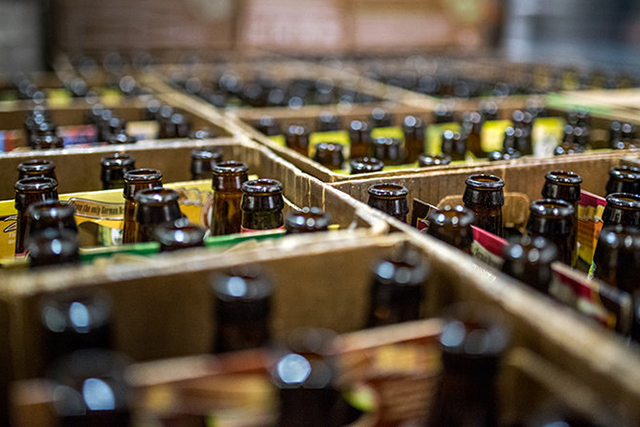
Of course, the beer has to taste great, but a consumer tastes with their eyes first and sometimes a social media photo is the first way to sell a new product.
With Hazy IPAs or NEIPAs, making a beer that isn’t a murky mess was on the mind of Dockside Brewery’s Dylan Salvatore in the creation of an upcoming release that is about a year in the making, called Dockmaster.
“We were … really kind of chasing a flavor but also an aesthetic,” Salvatore said. “(Co-brewer) Nick (Russell) and I were very much in on the aesthetic of beer. One of our first focuses is how is this beer gonna look in a glass and does it look appetizing? Is it easy to take a picture of or will it need perfect lighting on any given day to get a decent picture of it?
Salvatore referenced Fox Farm Brewery’s Burst beer as an inspiration.
“It’s got opaque haziness, but it’s still slightly translucent, you can get light through it,” he said. “And it’s just got this burst of orange. It’s the most photogenic beer I’ve ever seen, honestly, and where I’m going with Dockmaster was I want to do something more photogenic.
“It was a lot of us just playing with a balance of flavors, where to place the hops and develop flavor, mouthfeel, and everything. It took us six iterations to get into a spot where we’re ready.”
From playing with different temperatures, mash rests and yeast blends, Salvatore broke down the different aspects of the creation of Dockmaster with Brewer.
Hops: Utilizing Lesser Known Hops
Salvatore and Russell wanted something a little bit different, but still, be hops that are going to be relatively easy to source. The brewery has many guest taps and he drew inspiration from Counter Weight Brewing out of Cheshire, Connecticut.
“They did a beer with Pacific Sunrise and it just came off as like that perfect orange juice juiciness instead of the pith or rind or zest, it was just orange juice,” Salvatore said. “It seemed like really kind of a layup, where we can’t really screw up using this hop. We don’t have to mess with it over the course of forever to get it just right.”
Salvatore also loves El Dorado and paired it with Citra.
“A lot of people aren’t using El Dorado … we’re not seeing it a lot out there,” he said. “And Citra because … well, Citra has to be in every NEIPA. It’s just it’s that base flavor everyone just understands is an IPA at this point.”
Malt: Switching the Percentages
The rule of thumb, Salvatore pointed out has to have up to 40% of your grist having flaked wheat or oats, or some combo.
“While toying around with Dockmaster, Nick and I realize that it’s not really the direction we wanted to go,” he said. “If I’m just putting unmalted flaked stuff into a beer, 1) it’s going to be a hellhole to try to brew that beer regularly. It’s not going to be fun, it’s gonna be rough. And 2) we’re kind of giving up space where flavor can be added.”
Looking at market trends, the biggest thing that Salvatore feels people are talking about is that customers just want flavor.
“And, good flavor,” he said. “They want beer-flavored beer, but it needs to be full of flavor. So using more malted wheat and oats — and in way lower percentages — still gets us that really nice haze, but gives more ability to layer in flavor, where we would have otherwise let it go. And we got great results, we were very happy with the results.”
Yeast: Mixing Up Yeast Blends
Dockside continues to use London III because the claim is that it has the bio-transformation properties needed.
“I’m not entirely sure about that because I’ve also read stuff that normal single-strain brewer’s yeast don’t do biotransformation,” Salvatore said. “London III is a horrible attenuator. It doesn’t ferment well and we don’t want these big 6.5 Plato juice bombs that I can’t sit down and drink a few of them.
“I’m going to drink one, have my stomach full and my food didn’t help with that. Then I’m going to go home.”
READ MORE: The Best Hops to Complement London III Use
Instead, Dockside uses another yeast to really do the bulk of the attenuation to dry that beer out with a target of around 4.0 Plato for finishing,
More on this beer and others in the lineup, and how Salvatore worked on multiple aspects in developing the marketing behind Dockmaster is in this Brewer Mag Video Podcast.






1 Trackback / Pingback